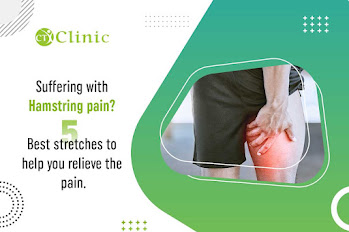Understanding Knee Pain
Knee problems can have all kinds of humorous names: Housemaid’s Knee, Clergyman’s Knee, Runner’s Knee – among other more formidable terms like Osgood-Schlatter’s disease and Chondromalacia Patella. But whatever we call it, one in five folks will experience knee pain for a while.
Doctor Simon Curtis explains what causes it and what we will do about it.
“In our osteopathic clinics, we see many patients with knee problems, often related to sports injuries, but constantly as a part of normal wear and tear on these joints which take tons of strain throughout a traditional life. And around one in five British will experience knee problems, with women suffering more frequently than men.
Common causes
There are a variety of causes of knee pain:
Ligament strains and sprains are usually given rise by trauma or a fall. For instance, you'll often hear them saying on TV that a footballer has torn his ligaments during a tackle, or twisted them while running.
Osteoarthritis, which may be a declinatory joint disease often affecting the knee. This is often more common in elderly patients.
Patello-femoral syndrome (pain within the front of the knee to try to go with the kneecap).
Overuse syndromes tendinitis and bursitis, which ask inflammation of the tendon and bursae (fluid-filled bags that reduce friction) respectively. Wear and tear can damage these structures and cause swelling.
Osgood-Schlatter’s disorder, an overuse problem where the quadriceps (thigh muscle) tendon causes inflammation thanks to excessive traction on the tibial tubercle (below the knee) where it attaches. This is often more common in athletic adolescents.
Referred pain from the hip, femur, or spine.
When patients come to Stockport physiotherapy with a knee problem, the physiotherapist will examine the local area, but also check out the structural mechanics throughout the patient’s body to know how and why the knee problem is being maintained. Sometimes, knee pain is often coming from the hip. At other times, hip stiffness or foot/ankle mechanics are often increasing the load on the knee and causing the knee to be painful.
For example, we recently treated a triathlete for Manchester knee pain which came on after he wane off his bike and onto his hip. He had tried several different approaches to his problem, but his knee didn't recover until we worked to enhance the function in his hip!
Getting professional help to seem at your knee mechanics and work to help within the healing process might be crucial and, in some cases, surgery on the knee are often of benefit.
Careful exercise is crucial
In almost all the cases of knee pain we have treated, we followed up the treatment by recommending exercises for which our Manchester chiropractor will be helping you. Exercise benefits knee problems. Strong leg muscles hold up the knee and grips shock before it gets to the knee. Exercising the quad muscles (at the front of the thigh) increases circulation within the knee and has been shown to stimulate beneficial biochemical changes within the joint fluid of the knee, improving its lubricating properties. Exercise also enhances the range of motion of the knee.”
Generally, an easy exercise that doesn't cause pain, will help strengthen the knees. But it's always an honest idea to hunt for professional guidance to work out the diagnosis of the matter and an appropriate management plan.



Comments
Post a Comment